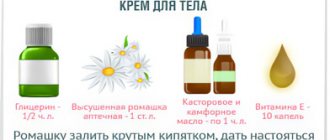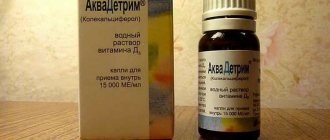Vitamin C is a water-soluble vitamin that is found in many foods. Sometimes it is added to food as an artificial additive, and sometimes it is deliberately taken as a medicine. Some animals can produce it on their own, but humans lack this ability. Therefore, it must necessarily enter the body from the outside. Only one of the isomers is biologically active - L-ascorbic acid, which is called vitamin C.
Vitamin C is involved in the production of collagen, it is present in connective tissue, tendons, ligaments, cartilage, gums, skin, teeth and bones, and is part of blood cells. Without it, normal cholesterol metabolism is impossible. Vitamin C is a powerful antioxidant that promotes good mood and a strong immune system. It charges a person with energy and gives him strength.
It is difficult to find an explanation for the widespread myth that lemon is the record holder for vitamin C content. It has long been proven that there are many other vegetables and fruits that are many times ahead of it in this race. Moreover, access to them is unlimited and they grow everywhere in our country.
However, it is difficult to overshadow the glory of lemons; many still consider them the main source of vitamin C. Most likely, this myth is rooted in our childhood, when in winter the only fresh fruit stores you could get were lemons and tangerines brought from the south. They were not just symbols of the New Year holidays, but the only available vitamin supplement for Soviet people. In addition, for the first time ascorbic acid was obtained from lemon juice, but few people know that its amount in 100 g of citrus is only 40 mg, and in tangerines it is even less - 38 mg.
- The importance of vitamin C in nutrition
- Vitamin C for colds: how does it protect us from viruses?
- Vitamin C for gastritis with high acidity
How much vitamin C can children, adults and pregnant women take per day?
In 2013, the European Scientific Committee on Nutrition compiled the daily intake of vitamin C for different categories of citizens. The minimum value for men is 90 mg, and for women – 80 mg. The ideal values are 110 mg for men and 95 mg for women. This amount of ascorbic acid will cover daily losses, as well as maintain its plasma level within 50 µmol/l.
In smokers, the daily requirement for vitamin C is 35 mg/day higher. This is due to the fact that they receive more toxins from tobacco smoke, which means that the body uses more antioxidants to neutralize them. Therefore, smokers have lower plasma vitamin C levels than non-smokers.
The daily intake of vitamin C for different age groups is presented in the table below:
| Age | Men (mg per day) | Women (mg per day) |
| 0-3 months | 30 | 30 |
| 4-6 months | 35 | 35 |
| 7-12 months | 40 | 40 |
| 1-3 years | 45 | 45 |
| 3-7 years | 50 | 50 |
| 7-11 years | 60 | 60 |
| 11-14 years old | 70 | 60 |
| 14-18 years old | 90 | 70 |
| 19 years and older | 90 | 90 |
| Pregnancy | 100 | |
| Lactation | 120 | |
| Smoking | 125 | 110 |
Norms of physiological needs for vitamins in the Russian Federation (RF, MR 2.3.1.2432-08)
Who needs more vitamin C?
If the body receives less than the recommended dose of vitamin C, the person develops a deficiency of this substance. The following people are at greater risk of developing vitamin deficiency:
- Smokers. Not only active tobacco users suffer, but also those who are nearby and regularly inhale smoke.
- Breastfed children receiving pasteurized or boiled milk.
- People following a diet with limited consumption of vegetables and fruits.
- Patients suffering from malabsorption, cachexia, certain types of cancer, renal failure (on hemodialysis).
- People living in areas with unfavorable environmental conditions.
- Persons at the stage of recovery from wounds.
- Women receiving oral contraceptives.
A person needs more vitamin C if he is regularly stressed or lacks sleep. The need increases against the background of viral infections, anemia and diseases of the cardiovascular system.
Maximum daily dose of vitamin C
The upper permissible level of vitamin C intake in Russia is 2000 mg/day. Ascorbic acid dissolves in water, so even if more than 10 g of it enters the body (this amount is contained in 200 yellow tablets), the kidneys will easily remove it.
So is there a risk of overdosing on vitamin C? Doctors say that symptoms of acute poisoning will appear if a person consumes 20-30 g of ascorbic acid per day.
However, if increased doses of vitamin C enter the body over a long period of time, this will lead to impaired absorption of vitamin B12, an increase in the level of uric acid in urine and the formation of oxalate stones in the kidneys. Excess ascorbic acid is dangerous for women taking estrogen-containing hormones.
High doses of vitamin C lead to increased levels of enzymes that are involved in its metabolism. This is especially dangerous for pregnant women, as it threatens the development of rebound scurvy in newborns.
[Video] What if you overdose on vitamin C?
Vitamin C absorption rate
A person must include vitamin C in his diet, since the body does not know how to produce it on its own. Food-derived ascorbic acid is absorbed in the small intestine by active transport and passive diffusion via SVCT carriers 1 and 2.
Vitamin C does not need to be digested before being absorbed. If a person is healthy, then it will be absorbed in the intestines by 80-90%. However, there is an interesting pattern here: the less vitamin C enters the body, the better it is absorbed. Such a high percentage is observed when a person consumes less than 1 g of the substance per day. If every day he receives it many times more, then the absorption rates decrease.
The average intake of ascorbic acid from food is 30-180 mg/day. With these values, the level of absorption is equal to 70-90%, but it increases to 98% if a person receives less than 20 mg of vitamin C. There is also the opposite pattern: absorption decreases to 50% if a person receives more than 1 g of the substance per day.
Ascorbic acid is absorbed quickly; in 2 hours the body will take the amount it needs, and after 3-4 hours the unused part will leave the bloodstream. If a person smokes, is under stress, or abuses alcohol, then this process proceeds even faster.
There are other factors that accelerate the process of removing ascorbic acid from the body. These include:
- High body temperature.
- Viral diseases.
- Treatment with antibacterial drugs.
- Taking Aspirin, cortisol and other medications aimed at reducing pain.
- Intoxication with harmful substances, such as carbon monoxide or heavy metals.
Most vitamin C is stored in the adrenal glands, pituitary gland, brain, eyes, ovaries and testicles. It is present in blood plasma, liver, heart, spleen, kidneys, lungs, pancreas and muscles.
When a person receives more ascorbic acid than he should, its plasma values increase, but the body controls this process. If these values exceed 500 mg, then mechanisms are launched aimed at its removal. Vitamin C either immediately leaves the gastrointestinal tract or is first transformed into dehydroascorbic acid (the liver and kidneys are responsible for this), and the substance that was not used is excreted in the urine.
History of discovery and physicochemical properties
Vitamin C is a water-soluble organic compound. You can often hear its other name - ascorbic acid (Acidum ascorbinicum). Is it so? Vitamin C is the biologically active L-isomer of ascorbic acid. The human body does not synthesize or accumulate this vitamin. Therefore, it has high biological value and should be present in the diet of any person every day.
!
The name comes from the Latin word “scorbutus” - scurvy.
The history of the discovery of this organic compound is associated with this disease. During the times of travelers Vasco da Gama, Magellan and Cook, when long voyages were made for the purpose of geographical discoveries, sailors were faced with a dangerous and fatal disease - scurvy. The reason for this was a lack of vitamin C (vitaminosis). The disease scurvy leads to disorders that cause pathologies of connective tissue, as a result of which it loses its strength. Symptoms of the disease are as follows: mobility of teeth, pain in the limbs, increased tendency to bleed, etc. At that time, there was no information about vitamin C, however, thanks to the observation of sailors in the life of Indian tribes, a solution was found. The salvation was a healing decoction - an aqueous extract of pine needles, which eliminated the lack of substances in the body.
Vitamin C
In the middle of the 18th century, in 1747, the chief physician of the naval hospital, a surgeon by training, James Lind conducted the first clinical study by experimenting on twenty sailors infected with scurvy. While searching for a cure for the disease, he added various foods to the diet of several groups of patients. It was possible to prevent the progression of the disease only in those sailors whose daily diet included citrus fruits - oranges and lemons. At that time, there was an opinion that scurvy was an infectious disease, so for quite a long time the results of the study and the scientific treatise “Treatment of Scurvy” by D. Lind were subject to severe criticism.
Participants of polar expeditions in Antarctica, on the continent of Antarctica and in the Southern Ocean also suffered from scurvy. In order to prevent the disease, members of three Russian Arctic expeditions G. L. Brusilova, G. Ya. Sedova and V. A. Rusanova used warm bear blood.
!
Vitamin C was isolated in its pure form in the late 20s of the 20th century by the American biochemist and Nobel laureate Albert Szent-Györgyi von Neugyrapolt.
And after 5 years it was already proven that vitamin C is necessary for the body to prevent the development of scurvy. Since that time, a large number of experiments and scientific studies have been carried out in order to determine the exact clinical effectiveness of this L-isomer of ascorbic acid.
Vitamin C is a fine white crystalline powder with a specific sour taste and complete absence of odor. Chemical name according to the nomenclature system: 2,3-dehydro-L-gulonic acid gamma-lactone. Chemical formula – C6H8O6. All existing vitamins of group C have 4 spatial forms (stereoisomers) with completely similar chemical formulas. Description of physical properties: soluble in water, and less soluble in other liquids. The resulting solution is unstable and the vitamin C in it rapidly decomposes. Crystalline ascorbic acid in dry form is stable and can be stored for a long time. Characteristics: melting point – 190°C, boiling point – 553°C, molar mass – 176.12 g/mol, easily destroyed by light, heat treatment and smog.
Beneficial properties of vitamin C
What diseases does a lack of vitamin C in the body lead to?
Vitamin C deficiency can cause serious diseases, including:
- Scurvy. Main symptoms: bleeding and swelling of the gums, dryness and petechiae on the skin, loosening and loss of teeth, perversion of taste, nosebleeds. To treat the disease, ascorbic acid tablets are prescribed, and it is also recommended to follow a diet. The dosage of vitamin C for various diseases can be up to 500 mg per day. The physiological requirement is from 40 to 110 mg per day.
- Follicular keratosis. The skin on the back of the shoulders, thighs and buttocks is primarily affected. It becomes uneven, rough, rough.
- Hair deformation. They become curved or spiral shaped, resembling a corkscrew. As hypovitaminosis progresses, they begin to fall out. To cope with the problem, it is necessary to normalize the intake of vitamin C in the body.
- Perifollicular hemorrhage (appearance of bright red dots in the area of the hair follicles). This disorder indicates a severe deficiency of vitamin C. However, with adequate therapy, the patient’s condition normalizes within 14 days from its start.
- Changes in the shape and structure of the nails (koilonychia). They become concave, and longitudinal red lines and spots appear on them.
- Dry skin, thinning. This is due to the fact that vitamin C is directly involved in the production of collagen, which is responsible for the elasticity of the dermis.
- Fragility of blood vessels. Small capillaries are affected first. Due to their rapid damage, bruises easily form on the human body. Bruising appears even if it is not preceded by injury.
- Slow wound healing. In the course of research, it was found that people with chronic leg ulcers always have reduced levels of vitamin C. In severe cases, a lack of ascorbic acid can be the root cause of the appearance of ulcers.
- Joint diseases. Sometimes they are so severe that the person develops lameness. The pain intensifies due to weakness of the blood vessels and swelling of the tissues.
- Weakness of bone tissue. It has been experimentally established that vitamin C is of enormous importance for bone formation. If there is little of it, then the rate of bone loss increases. Children's bone tissue is especially sensitive to a lack of ascorbic acid.
- Bleeding gums, tooth loss. With a mild deficiency, the gums swell, become swollen, and are easily damaged. As vitamin deficiency progresses, they become even more inflamed, become purple in color, and may become covered with purulent ulcers. If treatment is not started in time, dentin weakens, teeth become loose and fall out.
- Immunodeficiency. Numerous studies have found that vitamin C accumulates in immune cells and helps them resist harmful flora. If there is a lack of it, the protective forces weaken, and the risk of developing pneumonia and other serious diseases that end in death increases.
- Iron-deficiency anemia. Its main symptoms: pale skin, increased fatigue, dryness and hair loss, headache, koilonychia.
- Apathy , low mood, lack of energy.
- Obesity not associated with overeating and other obvious factors. It has been found that vitamin C deficiency leads to excess fat accumulation in the waist and abdomen.
- Chronic inflammation. Vitamin C is a well-known antioxidant. If there is not enough of it, then the cells are unable to withstand oxidative stress, become inflamed and destroyed. This, in turn, leads to the development of serious diseases and increases the risk of developing cardiovascular pathologies. One study found that adults with chronic ascorbic acid deficiency (15 years or older) had a 40% increased risk of developing heart failure.
[Video] Facts about vitamin C that you definitely didn’t know:
The importance of vitamin C in nutrition
Vitamin C takes part in detoxification processes in hepatocytes, together with cytochrome P450. Ascorbic acid neutralizes the superoxide radical, converting it into hydrogen peroxide, and also restores vitamin E and ubiquinone.
Without vitamin C, the normal formation of the immune system is impossible, since it is one of the leading stimulators of interferons. Its entry into the body ensures normal absorption of iron by the walls of the small intestine.
Vitamin C prevents hemoglobin glycation and prevents glucose from being transformed into sorbitol. Simply put, it prevents spikes in blood sugar levels.
There is evidence that ascorbic acid resists premature wear of neurons and is a means of preventing senile dementia and Alzheimer's disease. It is believed that consuming high doses of vitamin C as a dietary supplement does not provide the desired benefits. It is much more important to simply avoid chronic deficiency of this substance.
Interaction of ascorbic acid with other substances
There is poor compatibility of vitamin C with the following substances and medications:
- Acetylsalicylic acid (Aspirin). The absorption and absorption of vitamin C by tissues is impaired.
- Oral contraceptives.
- Alkaline drinks.
- Salicylates (increases the risk of developing urolithiasis).
- Short-acting sulfonamides.
- Ethanol (ethyl alcohol).
- Calcium chloride.
- Systemic corticosteroids.
- Fluoroquinolones.
- Phenothiazine-based antipsychotics.
- Amphetamine.
- Tricyclic antidepressants.
- Heparin and indirect anticoagulants.
- Aluminum based antacids.
Ascorbic acid combines well with carotenoids, retinol, folic and pantothenic acids, and tocopherol.
Benefits of Vitamin C
Health Benefits of Vitamin C:
- Vitamin C is a good antioxidant. It neutralizes free radicals and prevents the development of chronic diseases. A number of studies have shown that regular intake of ascorbic acid into the body helps increase the level of antioxidants in the blood by 30%.
- Vitamin C is effective for hypertension. An analysis of a number of studies suggests that with its regular intake into the body, a person’s systolic and diastolic pressure becomes lower [1].
- Vitamin C is a means to prevent heart and vascular diseases. Based on an analysis of 9 studies involving nearly 300,000 people, 700 mg of it reduces the risk of cardiovascular disease by 25% in people who get it from food rather than from supplements. In another 13 studies, scientists found that ascorbic acid reduced bad cholesterol levels by almost 8 mg/l and triglycerides by 20.1 mg/l [2].
- Vitamin C significantly reduces the risk of gout. Taking it helps reduce uric acid levels, which means protecting against new attacks of the disease. This was proven in scientific studies involving almost 50,000 healthy men. Those who regularly received vitamin C had a 44% reduced risk of developing gout [3].
- Vitamin C prevents anemia. This is possible due to the fact that ascorbic acid promotes better absorption of iron in the intestines. Simply consuming 100 mg of vitamin C with a meal containing iron improves iron absorption by 67%. This property of vitamin C is especially important for people who adhere to vegetarianism.
- Vitamin C strengthens the immune system , as it stimulates the activity of leukocytes to fight harmful flora, and also increases the resistance of the skin. Numerous studies have proven that ascorbic acid accelerates wound regeneration. There is evidence that people suffering from pneumonia have lower levels of vitamin C, and its introduction into the treatment of pneumonia speeds up recovery.
- Vitamin C prevents the development of senile dementia due to its powerful antioxidant abilities. It has been shown to prevent the development of dementia when sufficiently supplied through food or dietary supplements.
Vitamin C for colds: how does it protect us from viruses?
The effect of vitamin C on viral diseases has been studied in numerous studies. An analysis of 29 scientific studies with a total of 11,306 participants concluded that adding 200 mg of ascorbic acid or more does not reduce the likelihood of catching a cold. However, not everything is so simple. If there are other conclusions that scientists have come to. In particular, taking vitamin C can achieve the following effects:
- Reducing the severity of a cold.
- Reduction in disease duration by 8% in adults and 14% in children [4].
Other studies have shown the effectiveness of 6-8 g of ascorbic acid per day for sick adults and 1-2 g for children.
An even more pronounced effect was obtained among marathon runners, soldiers and skiers training in the Arctic. In them, vitamin C reduced the duration of colds by 50%.
Therefore, it was concluded that the substance exhibits increased therapeutic and antioxidant activity in individuals under the influence of physical stress.
Vitamin C for immunity
Vitamin C affects different parts of the immune system, making it stronger and stronger. Main directions of “work”:
- Stimulation of leukocyte production. It is these blood cells that are the main fighters against infection.
- Improving the ability of leukocytes to resist harmful flora and free radicals. As a result, all body cells are better protected.
- Strengthening the skin barrier.
- Acceleration of tissue repair process.
Vitamin C deficiency negatively affects the immune system. For example, it was found that in patients with pneumonia its level is reduced, and such patients also recover longer and worse.
Vitamin C for anemia
Vitamin C has been proven to improve iron absorption. It transforms it into a form that is better absorbed by the body. Therefore, for anemia, it is so important to include in the diet foods rich not only in iron, but also in ascorbic acid, for example, leafy vegetables, strawberries, and bell peppers.
Participants in one study took 100 mg of vitamin C with meals. As a result, their iron absorption process increased by 67%. These scientific findings are especially valuable for vegetarians, whose main problem is anemia [5].
Interesting Scientific Facts About Vitamin C
Interesting scientifically proven facts about vitamin C:
- Vitamin C combined with Doxycycline effectively fights cancer stem cells. Such conclusions were made by scientists from the University of Salford (Britain). Practicing professor M. Lisanti explains this by the fact that during chemotherapy, some cancer cells die because they cannot find nutrition, while others adapt to changing conditions and find auxiliary substances to maintain their vital functions. The combination of Doxycycline and ascorbic acid prevents them from getting energy from new sources. As a result, the surviving cells die of starvation. The undoubted advantage of this therapy is that both drugs do not have such a pronounced toxic effect on the body as classical chemotherapy.
- Intravenous vitamin C prevents atrial fibrillation after heart surgery. When receiving ascorbic acid, this complication developed less frequently by 44%, and patients were able to quickly leave the walls of the medical institution and return home. These conclusions were made by scientists from the University of Helsinki.
- Vitamin C can shorten the treatment period for tuberculosis if complex therapy is carried out. The experiment was carried out on rodents, and the findings were published in the journal Antimicrobial Agents and Chemotherapy. Scientists practiced 3 methods of treatment: only anti-tuberculosis drugs, only vitamin C, and a combination of these drugs. As a single drug, ascorbic acid did not allow for recovery or improvement, but in combination with Isoniazid and Rifampicin, the condition of the experimental mice quickly improved, and the affected tissues were restored. Their 100% cleansing of tuberculin bacillus occurred in just a week.
- Vitamin C helps you lose weight without exhausting physical training. This stunning conclusion was announced at the 14th International Conference on Endothelin. It turned out that ascorbic acid has the ability to reduce the activity of the ET-1 protein, which increases the risk of developing cardiovascular pathologies by stimulating the narrowing of blood collaterals. It has been established that, provided that vitamin C is regularly supplied in an amount of 500 mg, it reduces the activity of ET-1. Moreover, this effect is similar in strength to walking in the fresh air.
Use in folk medicine
Traditional medicine considers vitamin C as an anti-cold remedy. To prepare a medicinal drink that helps with respiratory viral diseases, you will need:
- Boiled water – 1.5 l.
- Table salt – 1 tbsp. l.
- Juice of 1 lemon.
- Ascorbic acid – 1 g.
You need to drink this drink within 1.5-2 hours. Teas with raspberries, lingonberries, and cranberries are no less beneficial.
Traditional healers call vitamin C an effective preventative against cancer. For this purpose, it is recommended to eat tomatoes seasoned with olive oil with the addition of garlic, dill and parsley.
To combat insomnia, to relieve nervous tension, as well as to relieve inflammation and pain from infectious diseases, traditional medicine recommends taking oregano as a source of vitamin C.
On the subject: Honey, lemon and garlic, recipe for cleaning blood vessels
The effect of ascorbic acid on the body
Ascorbic acid produces the following actions:
- promotes the absorption of sugars and iron;
- thins the blood, reduces platelet aggregation;
- participates in the synthesis of collagen fibers and kartinin, in the process of hematopoiesis;
- protects cells from the aggressive effects of free radicals (antioxidant effect);
- strengthens the immune system;
- reduces the influence of toxins (tobacco smoke, medications, chemicals);
- protects the liver from the toxic effects of ethanol (when drinking alcohol);
- normalizes brain activity, fluid balance (eliminates swelling);
- stimulates regeneration, accelerates the healing of fractures and wounds;
- affects the production of steroid hormones;
- improves the absorption of vitamin E and folic acid;
- strengthens the walls of blood vessels;
- reduces the risk of developing cancer.
Attention! Excess vitamin C often causes problems with internal organs.
Rainbow Light, Vitamin C Gummy Pieces, Tart Orange Flavor, 90 Pieces
★★★★☆
948 ₽
Buy at a discount
Which form of vitamin C is best absorbed?
Types of pharmaceutical vitamin C:
- Tablets for oral administration.
- Chewable tablets.
- Powder for preparing a solution.
- Effervescent tablets.
- Lyophilisate for preparing a solution for intravenous and intramuscular administration.
- Ready solution for injection (ampoules).
- Aqueous form of vitamin C.
Vitamin C is available with fruit flavors that improve the taste of the final product, which is especially important for children.
Forms of release of vitamin C:
- Ascorbic acid is vitamin C, as well as its simplest and cheapest form. However, not every digestive system is able to absorb it, so some people prefer either a milder form of release, or those drugs that are slowly activated in the intestines, thereby reducing the likelihood of digestive problems.
- Vitamin C with bioflavonoids. These are polyphenolic compounds that are present in products that hold the record for vitamin C content. This form is absorbed better by the body.
- Mineral ascorbates. Such drugs are indicated for patients with disorders of the digestive system, as they have reduced acidity. Vitamin C can be combined with sodium, potassium, calcium, zinc, molybdenum, chromium, magnesium and manganese. The price of mineral ascorbates is higher than that of ascorbic acid.
- Ascorbyl palmitate. This antioxidant is fat soluble, allowing it to penetrate cell membranes better.
- Ester- C. The form is represented by calcium ascorbate and metabolites of vitamin C, due to which it is better absorbed. This drug is more expensive than mineral ascorbates.
Pros and cons of different forms of vitamin C:
| Release form | pros | Minuses |
| Chewable tablets | Pleasant taste, which is achieved by adding sugar or glucose, as well as flavorings | Presence of chemical components. Prohibition for people with diabetes. |
| Effervescent tablets | Convenient to take and drink. Pleasant fruity taste. | Contains chemicals and sugar. |
| Classic capsules and tablets | Easy to take, just drink it with water. Contains a minimum of chemicals. | You need to dose it correctly. Not everyone likes the taste. |
| Dragee | Easy to dose. Small concentration of vitamin C. Suitable for adults and children. Affordable price. | Difficult suction. |
| Powder | Convenient to dissolve in water. May taste good. | There are a lot of unnecessary chemical components in the composition. |
| Spray | Convenient to take: just spray the drug into your mouth. Convenient to take with you. | The composition often contains chemical components and sugar. |
| Granules | This form is suitable for children and adults. Can be added to liquids and foods, or taken in pure form. | Inconvenient to take outside the home. |
| Syrup | Convenient to dose. Pleasant taste. | The composition contains chemical components. |
| Chewing marmalade | You can replace dessert with vitamin. Most often contains natural rather than chemical flavors. | You need to study the composition before purchasing. High price. |
The composition of the drug determines its price. The cheapest products most often contain only ascorbic acid. It is extracted from glucose by fermentation with special bacteria.
Ascorbic acid is available for purchase, but not every organism absorbs it. It should not be taken by people suffering from disorders of the digestive system or with a hypersensitive stomach.
Such individuals are better off opting for buffered vitamin C, which is a combination of ascorbic acid and sodium. This drug does not harm the gastrointestinal tract and does not change the acidic environment of the stomach. The name of buffered vitamin C is sodium ascorbate.
Vitamin C is absorbed better than others from a preparation called Ester-C. It contains ascorbic acid in the form of natural metabolites that do not disturb the acid-base balance of the digestive system. The only drawback of this form of release is the high price.
Liposomal vitamin C. It is represented by small balls - liposomes (a mixture of water and phospholipids), which are enriched with ascorbic acid. These balls dissolve only in the intestines, and not in the stomach. Cell membranes resemble liposomes in structure, so the body does not perceive the drug as a foreign component and absorbs it well. As a result, the vitamin does not disrupt the functioning of the gastrointestinal tract and is well absorbed. The main disadvantage of this form of release is the high price.
How to take vitamin C correctly?
Vitamin C is destroyed at a temperature of 60-70 degrees. It is also water soluble, so it breaks down quickly in liquids that can be used for cooking.
To get the maximum amount of vitamin C from foods, you need to eat them raw. This is easy when it comes to lemons, mangoes, grapefruits, oranges, spinach, kale or strawberries. Other foods, such as broccoli, require minimal cooking.
The dosage of vitamin C as a drug depends on the goal pursued by the doctor and the patient. Basic recommendations:
- 50-100 mg – to prevent vitamin C deficiency.
- 300 mg in the first weeks of pregnancy, after which the dose is reduced to 100 mg.
- 300 mg during pregnancy planning. The course lasts 10-14 days.
- Up to 500 mg for various diseases.
- 0.4-1 g for severe physical activity.
For children, the dose is determined individually, depending on body weight, severity of the disease and age of the patient. Its maximum permissible value is 100 mg (for children under 12 years of age).
Drink vitamin C after meals, in the first half of the day, but not on an empty stomach. The daily dose can be taken at a time, or divided into 2-3 approaches.
Calculation of the daily dose in tablets
The calculation of vitamin C in tablets depends on age, gender and purpose of administration (prevention or treatment). The drug should be taken after meals, without chewing or drinking water.
For preventive purposes, it is recommended to consume 1-2 tablets per day for adults and 1 tablet for children over 5 years of age. When treating hypovitaminosis, adults are prescribed 1-2 tablets 3-5 times a day, children over 5 years old - 1-2 tablets 2-3 times a day. During pregnancy and feeding a child, the daily dose is 6 tablets in the first 10-15 days, and in subsequent days - 2 tablets.
Overdose
If the maximum permissible dosage is exceeded, an overdose is possible. It is characterized by the following symptoms:
- bowel dysfunction such as diarrhea;
- heartburn (a burning sensation in the chest and an unpleasant taste in the mouth);
- urinary disturbance;
- change in urine color (appearance of a reddish tint);
- increased blood pressure;
- signs of hemolysis (destruction of red blood cells).
Help consists of using symptomatic drugs (antidiarrheals, antacids), reducing the dosage of vitamins and forced diuresis (diuretics are used).
Side effects of the drug manifest themselves in the form of neurological symptoms (headache, sleep disturbances, excitability, fatigue), dyspepsia (digestive disorders), the appearance of oxalates in the urine, pancreatic dysfunction and changes in blood counts.
Vitamin C for children
Vitamin C preparations for children:
- VitaBears. In recent years, this drug has been in high demand. Country of origin: USA. Release form: chewing marmalade. Age restrictions – for children over 3 years old. The composition contains only natural ingredients.
- Vitrum Baby. This vitamin complex contains 12 vitamins and 11 minerals. Release form: chewable tablets. Age restrictions – for children over 2 years old. Artificial additives are not included.
- Kinder Biovital. Country of origin: Germany. Release form: gel. Age restrictions – for children over one year old. The drug can be applied to the oral mucosa or taken orally.
- Pikovit 1+ syrup. This drug has a pleasant orange smell and taste. Age restrictions – for children over one year old. The composition contains artificial additives, so there is a risk of developing allergies.
- Evalar bears. This is a multivitamin complex from a well-known manufacturer. Release form: chewable lozenges. Age restrictions – for children over 3 years old.
- Doppelhertz Kinder. Country of origin: Germany. Release form: chewable lozenges with different flavors. Age restrictions – from 4 years.
- Supradin Kids. Age restrictions – for children over 3 years old. Release form: chewable lozenges. The composition includes chemical components.
Contraindications
Taking vitamin C supplements is contraindicated in the following cases:
- substance intolerance;
- allergy to additional components included in drugs or dietary supplements;
- thrombosis and thrombophlebitis.
Ascorbic acid is prescribed with caution if a history of:
- deficiency of the enzyme glucose-6-phosphate dehydrogenase;
- diabetes;
- renal pathologies (urolithiasis, urolithiasis);
- gastritis with high acidity;
- hemochromatosis;
- allergy to fructose;
- progressive cancer;
- leukemia.
Prolonged use of large doses is also prohibited.
California Gold Nutrition, Gold C, Vitamin C, 1000 mg, 240 Vegetarian Capsules
1 175 ₽
Buy at a discount
Is synthetic vitamin C harmful?
The market is overflowing with drugs that are sources of vitamin C. Manufacturers promise different effectiveness and bioavailability of their supplements (bioavailability refers to a certain degree of penetration of the substance into tissues).
There is no difference between natural and synthetic vitamin C. Their biological activity is identical. This has been proven in many scientific studies.
However, it is better if vitamin C is supplied to the body through food. Pharmacy medications must be prescribed by a doctor. Only a specialist will be able to correctly select the dose that a person needs in a certain period of time. If you eat properly and variedly, your body will receive enough vitamin C from vegetables and fruits. This means he doesn’t need supplements.
Adverse reactions
Due to increased sensitivity to ascorbic acid, the following conditions may appear:
- dyspepsia;
- damage to tooth enamel (if dragees dissolve or chewable lozenges are used for a long time);
- weakness;
- dizziness;
- runny or stuffy nose;
- redness of the eyes, watery eyes;
- frequent urination;
- nervousness;
- insomnia;
- swelling of the mucous membranes of the mouth and pharynx.
Laboratory diagnostics may reveal:
- neutrophilic leukocytosis;
- erythropenia;
- increased levels of adrenergic steroids;
- hypokalemia;
- decrease in glycogen concentration.
Severe allergic reactions almost never occur. But in rare cases, life-threatening conditions can develop: Quincke's edema in the larynx and anaphylactic shock.
Attention! If side effects occur, you should stop taking medications containing vitamin C, get tested and consult a doctor.
Warnings and Side Effects
The fact that the body needs vitamin C can be understood by certain signs: weakness, fatigue, decreased performance, pain in joints and muscles, bruising in the form of a rash on the skin. The dermis itself becomes pale, the gums become discolored, swell, and bleed. Any wounds take a long time to heal. A person begins to get sick more often, his teeth fall out, and he loses a lot of weight.
However, an excess of vitamin C is extremely undesirable, so a person should not receive more than 2 g of the substance per day. This will avoid side effects such as diarrhea and flatulence.
There is an opinion that an excess of vitamin C is dangerous (up to 10 g per day) and can provoke serious complications, including:
- Congenital developmental anomalies.
- Cancerous tumors.
- Vascular atherosclerosis.
- Excessive oxidative stress.
- Urolithiasis (urolithiasis). According to a 2017 study, consuming 1000 mg/day or more of vitamin C is associated with a 41% increased risk of kidney stones in men [6]. This risk does not apply to women.
However, none of this statement is supported by scientific facts. There is no evidence that vitamin C has a toxic effect on the body or is harmful to health.
Problems with the gastrointestinal tract can indeed occur, but they are not very pronounced and disappear after reducing the dose of ascorbic acid. The most common disorders: nausea, epigastric pain, loose stool.
There are medications that can reduce the level of vitamin C in the body. These include: oral contraceptives (estrogen levels increase and hormonal imbalance may occur) and Aspirin (when taken in high doses).
When treated with vitamin C, salicylates and some antibacterial drugs, the level of these substances in the blood plasma increases. On the contrary, the effectiveness of heparin and coumarin anticoagulants decreases.
If you combine therapy with vitamin C, E, beta-carotene and selenium, there is a risk of reducing the effectiveness of drugs aimed at reducing cholesterol and niacin levels in the blood.
Vitamin E and iron are absorbed better if you combine them with ascorbic acid.
Vitamin C is not recommended to be taken simultaneously with antacids. There are also several studies that vitamin C may reduce the effectiveness of drugs used to treat HIV and oncology.
It must be remembered that it can interact with many drugs. For example, the simultaneous use of ascorbic acid and Aspirin, Reserpine, Indomethacin, Butadione, Prednisolone is not recommended. This can be dangerous due to increased side effects and excessive irritation of the gastric and duodenal mucosa.
Vitamin C for gastritis with high acidity
Vitamin C can irritate a sore stomach. When taken in high doses, pain in the epigastric region, heartburn, nausea, vomiting and diarrhea may occur. For such patients, the best form of the vitamin is Ester-C. This is a special form of ascorbic acid that does not disturb the acid-base balance and does not affect the digestive system.
To avoid exacerbation of gastritis, you should not prescribe vitamin C yourself.
Harmful properties of ascorbic acid
Improper use of vitamin C can harm the body.
The harmful properties of the compound are:
- The ability to inhibit the process of converting glucose into sorbitol (six-hydroxy alcohol). May cause hyperglycemia (increased blood sugar levels). Because of this, taking ascorbic acid in the form of tablets and dragees is contraindicated in diabetes mellitus.
- Irritant effect on the mucous membrane of the digestive tract (when combined with Aspirin).
- Ability to cause diarrhea.
- The ability to accumulate in tissues, causing an overdose.
- Effect on heart function.










